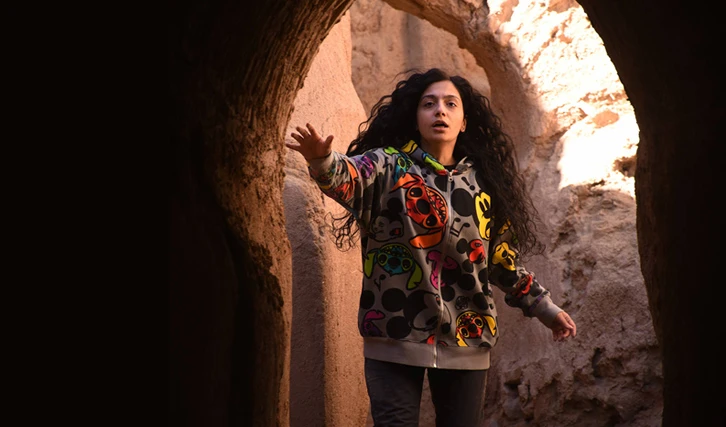"Die Saat des Heiligen Feigenbaums" Review: Uncovering the Depths of Family and Society
In the heart of Mohammad Rasoulof’s family and society drama "Die Saat des Heiligen Feigenbaums" (The Seed of the Holy Fig Tree), a poignant narrative unfolds, delving into the aftermath of the protests following the tragic death of Jina Mahsa Amini. The film portrays the profound impact of these events on a family torn apart by generational divides, where a stark rift emerges between parents and daughters. Rasoulof’s courageous endeavor to bring this story to life without official approval led to his flight from Iran, evading arrest and a ban on his artistic pursuits. In a candid conversation, he sheds light on the challenges of clandestine filming and the weight of living under constant pressure and moral dilemmas.
The Story So Far: A Glimpse into a World Transformed
As the film unfolds, we are drawn into a world where echoes of real-life protests reverberate through the lives of a family grappling with internal struggles. The juxtaposition of personal turmoil against the backdrop of societal unrest creates a riveting narrative that forces us to confront the complexities of loyalty, belief, and dissent in the face of authoritarian rule.
Unveiling the Layers of Conflict and Compromise
Rasoulof masterfully weaves together the threads of personal and political turmoil, painting a vivid portrait of a family caught in the crosscurrents of tradition and modernity. Through the lens of a mother torn between upholding entrenched values and embracing change, we witness the intricate dance of power dynamics within the family unit. The film deftly navigates the nuances of generational discord, highlighting the clash between obedience and rebellion, acceptance and defiance.
A Cinematic Exploration of Resilience and Resistance
Against a backdrop of simmering tension and societal upheaval, Rasoulof captures the essence of resilience in the face of adversity. The film’s narrative arc unfolds with gripping intensity, culminating in moments of stark brutality that lay bare the harsh realities of dissent in a repressive regime. Through the lens of individual choices and collective consequences, the film invites viewers to ponder the cost of standing up for one’s beliefs in a world rife with injustice.
Conclusion: A Poignant Reflection on Courage and Consequence
"Die Saat des Heiligen Feigenbaums" stands as a testament to the enduring power of storytelling in the face of oppression. Rasoulof’s bold vision and unwavering commitment to truth illuminate the shadows of a society in flux, offering a compelling narrative that resonates long after the credits roll. In a world fraught with moral ambiguity and political strife, this film serves as a poignant reminder of the sacrifices and struggles inherent in the pursuit of freedom and justice.
Frequently Asked Questions
- **What inspired Mohammad Rasoulof to create "Die Saat des Heiligen Feigenbaums"?
Rasoulof drew inspiration from real-life events and his personal experiences with censorship and oppression in Iran.
- How did Rasoulof navigate the challenges of filming without official approval?
Rasoulof employed clandestine filming techniques, including using decoy scripts and discreet locations, to evade detection.
- What themes does the film explore regarding family dynamics and societal unrest?
The film delves into themes of generational conflict, loyalty, dissent, and the impact of societal upheaval on familial relationships.
- Why did Rasoulof choose to include real-life protest footage in the film?
The incorporation of authentic protest footage adds a layer of realism and urgency to the narrative, reflecting the socio-political climate of the time.
- What significance does the character of the mother hold in the story?
The mother symbolizes tradition, duty, and the internal conflict between upholding established norms and embracing change.
- How does the film depict the challenges faced by men in Iranian society?
The film portrays the pressures and moral dilemmas faced by men in a repressive society, highlighting the tension between personal desires and societal expectations.
- What role does violence play in the film, and why was it portrayed in such a stark manner?
Violence is depicted as a harsh reality of dissent and resistance, serving as a stark reminder of the consequences of defiance in oppressive regimes.
- What metaphorical significance does the old village hold in the narrative?
The old village serves as a metaphor for the historical and cultural roots of Iran, highlighting the enduring conflict between tradition and modernity.
- How does the character of the father evolve throughout the film?
The father’s journey reflects a moral dilemma between comfort and freedom, showcasing the erosion of values under societal pressures.
- What lasting impact does "Die Saat des Heiligen Feigenbaums" leave on viewers?
The film leaves a profound impression, urging viewers to reflect on the complexities of loyalty, sacrifice, and resilience in the face of oppression.
Tags: Die Saat des Heiligen Feigenbaums, Mohammad Rasoulof, family drama, societal unrest, political dissent, Iranian cinema, oppression, resistance, tradition vs. modernity.

